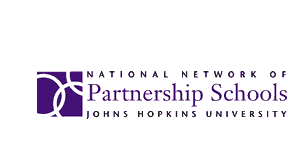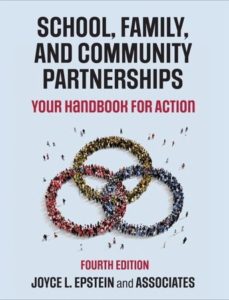Type 6 – Collaborating with the Community
COLLABORATING WITH THE COMMUNITY
COMMUNITY CONTRIBUTES
- Business partners, agencies, cultural groups, health services, recreation, and other groups and programs
SCHOOLS, STUDENTS, AND FAMILIES CONTRIBUTE
- Service learning, special projects to share talents and solve local problems
SAMPLE PRACTICES
- View Community Partnership Charts to learn how schools connect with community partners to reach goals for student success
- Information for students and families on community health, cultural, recreational, social support, and other programs or services
- Information on community activities that link to learning skills and talents, including summer programs for students
- “One-stop” shopping for family services through partnerships of school, counseling, health, recreation, job training, and other agencies
- Service to the community by students, families, and schools (e.g., recycling projects; art, music, drama, and activities for senior citizens; tutoring or coaching programs
- Participation of alumni in school programs for students
- School-business partnerships
CHALLENGES
- Solve problems of turf, responsibilities, funds, and goals
- Inform all families and students about community programs and services, and ensure equal opportunities for services and participation
REDEFINITIONS
- “Community” includes not only families with children in the schools, but also all who are interested in and affected by the quality of education.
- Communities are rated not only on economic qualities, but also on the strengths and talents available to support students, families, and schools.
RESULTS FOR STUDENTS
- Knowledge, skills, and talents from enriched curricular and extracurricular experiences and explorations of careers
- Self-confidence and feeling valued by and belonging to the community
RESULTS FOR PARENTS
- Knowledge and use of local resources to increase skills and talents or to obtain needed services for family
- Interactions with other families, and contributions to community
RESULTS FOR TEACHERS AND SCHOOLS
- Knowledge and use of community resources for improving curriculum and instruction
- Strategies to enable students to learn about and contribute to the community
Copyright © 2024 - PartnershipSchools.org at the Johns Hopkins University School of Education - All rights reserved. Conforms to W3C Standard XHTML & CSS


